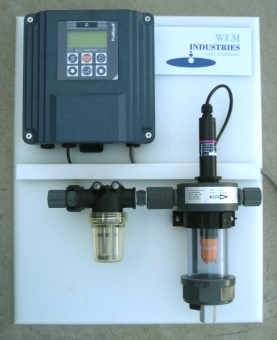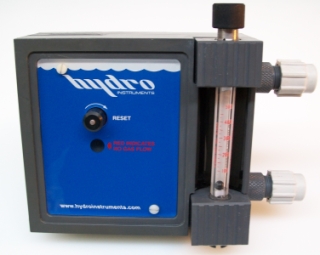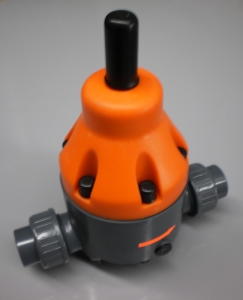Metering Pumps
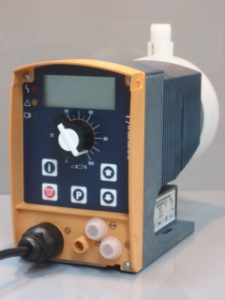

Solenoid Diaphragm Metering Pumps
Capacities up to 80 l/hPressures up to 25 bar
Various models are available from the most basic stand-alone to the latest Profibus controlled pumps. Control signals such as analogue (0-20mA, 4-20mA) , volt-free contact and volt-free pause can be feed directly into the pumps. Flow paced dosing can be achieved through the Pulse - multiply/divide function. Batching can be programmed and initiated with a volt-free contact.
Monitoring of chemical level can be achieved through float switches, with a relay within the pump announcing low level.
A dose rate in litres an hour and a totalised consumption of chemicals can be viewed on the pump's LCD display.
Loss of flow and airlocks can now be internally monitored, with corrective actions instigated by the pump. This feature allows gassing chemicals to be dosed with a flooded suction.
Diaphragm rupture can be monitored and announced remotely via an internal fault relay.
The integrity of the programmed pump, can be maintained through an access code.
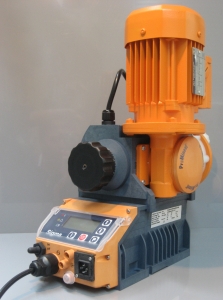

Motor-driven Diaphragm Metering Pumps
Motor-driven Hydraulic Diaphragm Metering Pumps
Motor-driven Piston Metering Pumps
Capacities over 60000 l/hPressures over 4000 bar
Various models are available from the most basic stand-alone to the latest Profibus controlled pumps. Control signals such as analogue (0-20mA, 4-20mA), volt-free contact and volt-free pause can be feed directly into the pumps. Flow paced dosing can be achieved through the Pulse - multiply/divide function. Batching can be programmed and initiated with a volt-free contact.
Monitoring of chemical level can be achieved through float switches, with a relay within the pump announcing low level.
A dose rate in litres an hour and a totalised consumption of chemicals can be viewed on the pump's LCD display. Loss of flow and airlocks can now be internally monitored, with corrective actions instigated by the pump. This feature allows gassing chemicals to be dosed with a flooded suction.
Diaphragm rupture can be monitored and announced remotely via an internal fault relay.
The integrity of the programmed pump, can be maintained through an access code.
Peristaltic Metering Pumps
Various models are available from the most basic stand-alone to direct signal input controlled pumps.Control signals such as analogue (0-20mA, 4-20mA) and volt-free contact can be fed directly into the pumps. Flow paced dosing can be achieved through direct signal input from a flowmeter.
A dose rate in litres an hour can be viewed on the pump's LCD display.
The gentle nature of operation lends itself well to the dosing of polymers, viscous and abrasive chemicals. These pumps also feature non-pulsating flow.
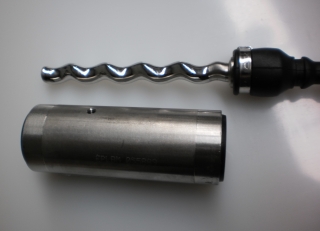

Progressive Cavity Metering Pumps - Helical Rotor Pumps
Capacities to 480,000 l/hPressures to 24 bar
These pumps can be controlled through On/Off control, Manual variator fitted to the gearbox or analogue control (0/4-20mA) through a VFD. Various wetted materials are offered to suit chemicals in use.
The gentle nature of operation lends itself well to the dosing of polymers, viscous and abrasive chemicals. These pumps also feature non-pulsating flow.
Pneumatic Metering Pumps
Capacities to 16 l/hPressure to 16 bar
These pumps are a pneumatically operated - diaphragm metering pump. The metering strokes of these pumps are generated by a pneumatically actuated diaphragm. A spring return is used to produce the suction stroke.
The delivery capacity can be varied by stroke frequency and stroke length setting. Stroke rate can be set between 0 to 180 strokes minute. These pumps can be used where power is not available or for hazardous areas.
Hazardous Area Metering Pumps
Capacities to 60 l/hPressures to 25 bar
These pumps feature direct signal input as external contact, potential free on/off and analogue.
The pumps conform to the unified EU standard EN 50014/50018 for "flameproof enclosure". They carry the highest enclosure class for this protection type. This standard is recognised in many countries outside the EU.
The stroke solenoid and microprocessor are housed inside the pump housing, which conforms to DIN 40050 standards on contact and moisture resistance. The housing is rated to IP65 protection, even with the front cover open.
Two versions are available;
G version
Gas explosion proof property class II, property class 2G (zone 1, group II)
For use in gas endangered areas - Protection grade EEx [i,a] d IIC T6
EEx - Explosion proof equipment which conforms to European standards.
[i,a] - Control input intrinsically safe in case of occurrence of two unrelated faults.
d - Fire proofing; flame proof enclosure
IIC - Explosion group II for all explosion endangered areas apart from mining, sub group IIC (includes IIA and IIB)
T6 - Temperature class, permitted for gas and moisture with ignition temperature >85 degress C. This is the highest class and includes T1 to T5.
M version
Firedamp property class I, property class M2 (group I)
For use in firedamp endangered mining operations. Protection grade EEx d I/II C T6
EEx - Explosion proof equipment which conforms to European standards.
d - Fire proofing; flame proof enclosure.
IC - Explosion group I for firedamp endangered operations.
IIC - Explosion group II for all explosion endangered areas apart from mining, sub group IIC (includes IIA and IIB)
T6 - Temperature class, permitted for gas and moisture with ignition temperature > 85 Deg. C. This is the highest class and includes T1 to T5.




